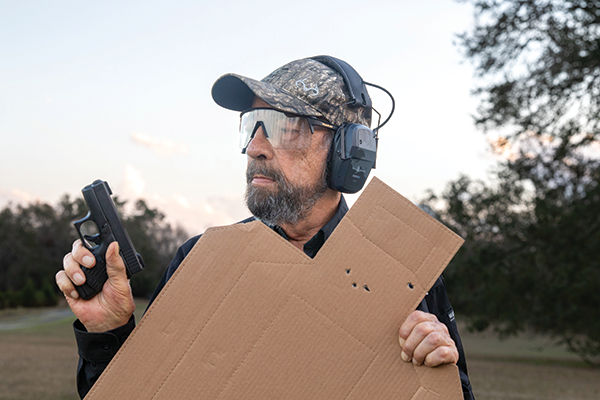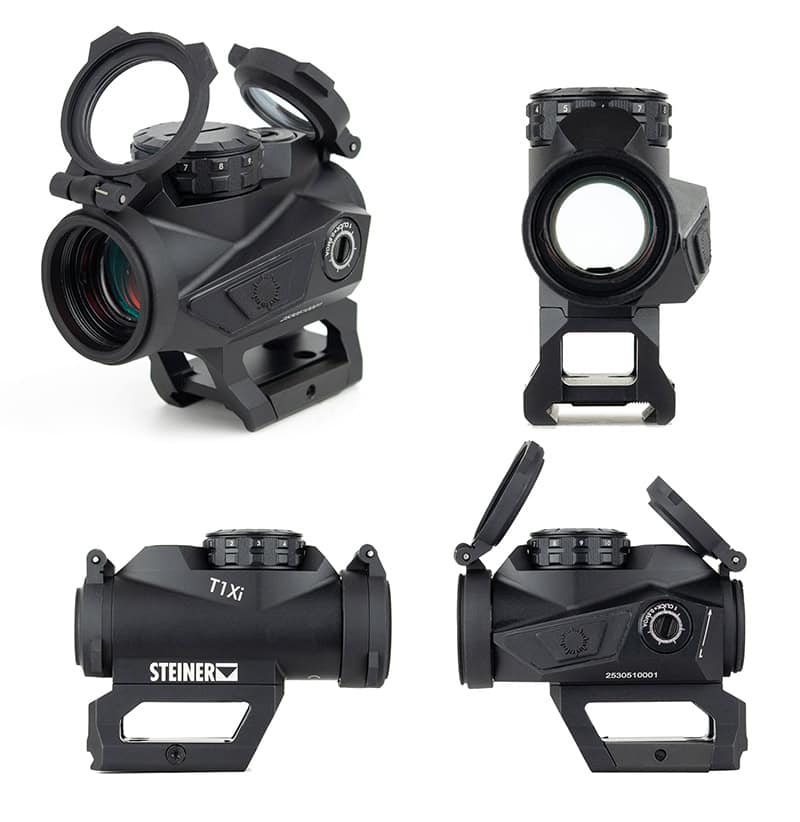Selling The .380 Today
The .380 ACP (Automatic Colt Pistol) cartridge — designed by none other than John Moses Browning — was introduced in 1908 in the Colt Pocket Model pistol. It was an instant hit. Like its .32-caliber predecessor in 1903, it was slim and flat, and easy to carry, as well.
It would sell nicely in the U.S., a country where no indigenous firearms manufacturer would produce a pistol in 9mm Luger until the lightweight Colt Commander of 1949/1950. Savage and Remington also made .380s with varying degrees of commercial success.
By 1930, Americans were buying imported Walthers in this caliber too, and many GIs brought those and pistols like the German Sauer and Italian Beretta Model 1934 pistols back from WWII as war souvenirs. Americans would continue to buy European pocket Autos in .380 thereafter. Colt would eventually produce micro-size 1911-ish pistols in the caliber, as would other manufacturers.
Ruger LCP Reignited Interest
Long-time dealers will remember what revitalized the caliber in this country was Ruger’s LCP (Light Compact Pistol), a well-made and affordable homage to the Kel-Tec P3AT. The LCP sold so fast it created a shortage of .380 ACP ammo that lasted for a while.
Others jumped on the bandwagon: SIG with various models, Kahr Arms, Kimber, S&W (with their first-generation BODYGUARD .380) and more.
This combined with the related trends of expanded concealed carry licensing and the constitutional carry movement, now the law in 29 states, to create a much wider market for .380 pistols.
There were several reasons for their popularity. Let’s analyze those, because each is a selling point.
.380 Selling Points
First, there is the tiny size and feathery weight of the smallest models: the “light” and “compact” of the LCP’s name. The smallest .380s are simply super-convenient to carry and easy to hide, so as not to alarm the public by allowing people to see the shape of a gun printing under a garment. This second element — discreet concealability as distinct from comfortable carry — is a selling point in and of itself.
Second, many .380s — but not all! — have relatively mild recoil. Smith & Wesson’s new BODYGUARD 2.0, for example, is night-and-day different in handling and “shootability” from the original, which had a long, heavy, double-action pull for every shot and felt rather snappy on recoil.
The 2.0’s “kick” isn’t a lot more than a .22, and its trigger pull is much more amenable to fast, accurate shooting. Its sights — a big notch rear and an easy-to-see big front post with a bright orange dot and a tritium night sight dot to boot — are far superior to those of the original BODYGUARD .380.
Ruger likewise advanced in the trigger pull area, supplementing their original double-action-only LCP with the LCP II, boasting a much shorter, lighter and generally easier trigger pull.
The GLOCK 42 .380 is particularly easy to shoot well, even with only two fingers on the tiny grip frame that surrounds its six-round magazine. (Sales tip: Show the customer they can still have a strong firing hold with their pinkie finger tucked tightly under the butt.)
The cartridge capacity question brings us to a third advantage. Ruger is selling the hell out of their LCP MAX with higher cartridge capacity. The S&W BODYGUARD 2.0 comes with one supposedly 12-round and one supposedly 10-round magazine, though I’ve found either works better downloaded by one. (A tip you might want to give customers buying one.) Nonetheless, it’s a great leap forward from a six-round micro-.380 magazine.
Finally, some people want a very small carry gun because they have hands weakened by age, illness or injury. This means they need a slide that’s easy to operate by hand.
In .380, you now have many choices. Ruger’s slightly larger LC380 was expressly made to be easy to rack; ditto their Lite Rack Security-380. They even have a .22 LR version of the LCP with an especially easy-to-run slide. Smith & Wesson’s EZ series is so named because of its easy-racking slide, and it came out in .380 before it came out in 9mm.
The many mini-1911s in .380 from Browning, Colt, Kimber and SIG (and I’ve probably missed a few) have easy-to-manipulate slides. Be sure to show the customer how to first cock the hammer, alleviating the resistance of the mainspring to the slide’s rearward movement.
The Downside
Ethical marketing demands we don’t encourage good people to protect themselves with guns so low in power we wouldn’t carry them ourselves.
Historically, the .380 was considered something between too weak to trust for self-defense and marginally, minimally adequate for the purpose. The great gun expert Jeff Cooper once disdainfully said if you wanted a .380 you wanted one with lots of bullets because you’d need lots of those little bullets to stop a violent attacker.
Well, today, we have easy-to-carry .380s with lots of bullets … and we also have much better ammo than the early .380 carriers had access to. The 95-grain round nose FMJ — long “the only .380 game in town” — tended to create an icepick-like puckered wound that simply didn’t damage a whole lot of tissue.
I had the privilege of knowing Charles “Skeeter” Skelton, one of the great gunwriters of the latter 20th century and a veteran lawman. He was the first, to my knowledge, to do testing that determined .380 ball ammo had exactly the same wound profile as 158-grain round nose lead .38 Special from a 2″-barrel concealment revolver. It made him switch from his five-shot S&W and six-shot Colt .38 Special snubs to a higher-capacity Walther PP for deep concealment in the hot weather where he lived.
However, Skelton was also acutely aware both of those cartridges, the round-nose .38 Special and the round-nose .380, had developed extremely poor reputations as “manstoppers” in actual gunfights. An excellent shot, he was counting on accurate bullet placement when he carried something smaller than his preferred .357 Magnum revolvers and .45 Autos.
Today, we hear experts say, “Penetration is most important, so load your .380 with ball ammo.” This unfortunately overlooks the long, poor history of such bullets in quickly ending gunfights.
Are .380 hollowpoints the answer? It depends on the question. Historically this “9mm Short” round has had enough power to expand a hollowpoint with a short wound path or to drill a narrow channel deep enough with ball ammo, but not both.
The Hornady XTP 90-grain jacketed hollowpoint seems to come closest in ballistic gelatin testing to reaching acceptable depth with at least some expansion.
Fluted bullet loads from Lehigh or Black Hills’ HoneyBadger show promise, but we aren’t seeing enough actual results on the street to know for sure. Federal’s recent Punch .380 is another promising but unproven hollowpoint.
Experts still debate the issue. Master instructor Tom Givens (rangemaster.com) won’t allow any caliber less than 9mm in his Instructor classes. Dr. Gary Roberts was a protégé of the late Col. Martin Fackler, MD, and inherited Fackler’s mantle as the leading authority on wound ballistics today. He recommends certain .38 Special loads in small revolvers but does not recommend any .380s.
The Bottom Line
From the ethical marketing perspective, you may not personally care for the .380 and it’s perfectly okay to tell the customer why it’s not your first choice. At the same time, however, history shows us “did you have a gun” is far more important to violent attack survival than “what kind of ammo did you have in that gun.”
A great many of your customers’ experience and lifestyles will limit them to something very small and light, or no gun at all. In this case, you’re doing them a favor telling them to buy a small .380.
Of course, continuing in the ethics vein, it’s critical to explain to the customer the importance of training and practice to put that little .380 bullet where it’s most likely to stop a violent, homicidal attack.






